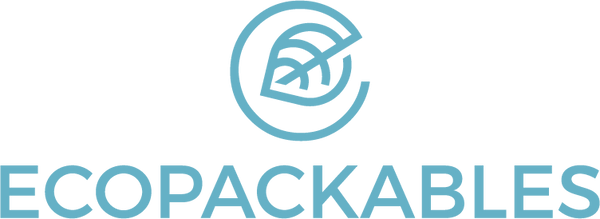Shelf Life
Compostable: To ensure maximum longevity, EcoPackables compostable mailers should be stored in a dark, dry place. If stored correctly, they will be strong enough to send parcels around the world for at least 9-12 months, if not, their strength will be compromised. This is why we recommend ordering in 6-month intervals.
Recycled paper: Recycled paper packaging is a sustainable choice that can provide effective product protection when stored correctly. While it doesn't have a strict "shelf life," it's important to maintain proper storage conditions. In certain environments, recycled paper may become drier and more brittle over time. However, with proper care, it can continue to serve its purpose while contributing to a greener planet.
Recycled plastic: Recycled plastic packaging is renowned for its durability and longevity. Unlike some materials, it doesn't have a defined shelf life and can last for many years without losing strength or durability. This remarkable resilience is a testament to the benefits of recycled plastic, offering both product protection and a lasting environmental impact.
Considerations for When to Buy
How frequently you should order packaging materials can vary widely depending on several factors, including the type of products you sell, your sales volume, and your storage capacity. There is no one-size-fits-all answer to this question, but here are some considerations to help determine how often you should order packaging:
Sales Volume: Companies with high sales volumes may need to order packaging materials more frequently than those with lower sales volumes. If you have a high rate of product turnover, you'll need to replenish packaging more often.
Seasonality: Some times of the year are busier than others. If you order multiple times a year, it is good to consider at what times you’ll need more or less packaging to be most efficient with storage.
Holidays: Many businesses experience fluctuations in sales around the holidays. For a company looking for holiday-themed packaging, you may need to consider placing your order in September, or even August to be well-prepared for the holiday season.
Storage Space: Consider the amount of storage space you have available for packaging materials. Ordering in bulk may be cost-effective, but only if you have the storage capacity to accommodate it.
Lead Time: Take into account the lead time. You'll need to order materials early enough to ensure you have them when you need them.
Production Schedule: Align your packaging orders with your production schedule. This ensures that you have packaging materials available when you are manufacturing your products.
Sustainability Goals: If your company is committed to sustainability, you may want to order packaging with a focus on minimizing waste, which could affect order frequency.
Cost Considerations: Consider the cost of ordering packaging materials. Ordering in larger quantities may offer cost savings, but you'll need to balance this with storage costs and potential waste.
Conclusion
In the world of packaging, the frequency at which companies purchase their materials is far from a one-size-fits-all equation. It is a dynamic process, intricately linked to a multitude of factors that businesses must carefully consider. The choice of packaging material, the extent of storage capabilities, sustainability objectives, and sales volumes all play pivotal roles in determining the optimal rhythm of procurement.
For businesses, understanding the balance between these factors is the key to not only efficient operations but also to aligning with modern consumer expectations. Packaging isn't just about protecting products; it's also about making sustainable choices that resonate with environmentally conscious consumers. By striking the right balance, companies can reduce waste, lower costs, and minimize their ecological footprint.
Ultimately, as companies navigate the complex landscape of packaging procurement, they must remember that it's not just about the frequency of orders; it's about making informed decisions that benefit their bottom line, satisfy customers, and contribute positively to the planet. It's a delicate dance that underscores the evolving nature of modern business, where sustainability, efficiency, and customer satisfaction are all part of the same harmonious routine.

